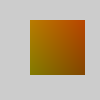This reference is for Processing 2.0+. If you have a previous version, use the reference included with your software. If you see any errors or have suggestions, please let us know. If you prefer a more technical reference, visit the Processing Javadoc.
| Name | set() |
||||||||
|---|---|---|---|---|---|---|---|---|---|
| Examples |  color black = color(0); set(30, 20, black); set(85, 20, black); set(85, 75, black); set(30, 75, black); 
for (int i = 30; i < width-15; i++) {
for (int j = 20; j < height-25; j++) {
color c = color(204-j, 153-i, 0);
set(i, j, c);
}
}

size(100, 100);
PImage myImage = loadImage("apples.jpg");
set(0, 0, myImage);
line(0, 0, width, height);
line(0, height, width, 0);
| ||||||||
| Description |
Changes the color of any pixel, or writes an image directly to the display window. The x and y parameters specify the pixel to change and the c parameter specifies the color value. The c parameter is interpreted according to the current color mode. (The default color mode is RGB values from 0 to 255.) When setting an image, the x and y parameters define the coordinates for the upper-left corner of the image, regardless of the current imageMode(). Setting the color of a single pixel with set(x, y) is easy, but not as fast as putting the data directly into pixels[]. The equivalent statement to set(x, y, #000000) using pixels[] is pixels[y*width+x] = #000000. See the reference for pixels[] for more information. |
||||||||
| Syntax | set(x, y, c) set(x, y, img) | ||||||||
| Parameters |
| ||||||||
| Returns | void | ||||||||
| Related | get() pixels[] copy() |
